
A History of and Guide to
UNIFORM EDITIONS OF MARK TWAIN'S WORKS
"Tom Sawyer is simply a hymn put into prose form to
give it a worldly air."
- Samuel Clemens unmailed letter to W. R. Ward, 8 September 1887
Chapter 15
Brief Overview of Volume 12:
The Adventures of Tom Sawyer
First Publications
The Adventures of Tom Sawyer, a tale of the trials
and tribulations of a boy in rural Missouri, was the first novel
Samuel Clemens wrote following his collaboration with Charles Dudley Warner
on The Gilded Age. He completed the manuscript in November 1875.
The novel comprised 71,500 words in 35 chapters and an epilogue. Elisha
Bliss of American Publishing Company commissioned True W. Williams to illustrate
the text. Williams provided at least 161 drawings for the book. However,
it would be over a year before the book was released in the United States
on December 8, 1876. In the meantime British publisher Chatto and Windus
issued an unillustrated edition in June 1876. A month later Belford Brothers,
a Canadian publishing house, pirated the book sending approximately 100,000
cheap copies across the border into the United States. In Europe, German
editions of the book were issued in October. The book was destined to become
one of Mark Twain's most popular. In 1892 American Publishing Company issued
a new low-cost edition to take advantage of the holiday trade.
Refining the Work
When Frank Bliss of American Publishing Company issued The
Adventures of Tom Sawyer in the 1899 uniform edition, Clemens had an
opportunity to revise and refine his work. Production of the new 1899 plates
also had the potential to introduce inconsistencies into the texts that
were the result of typesetting errors.
|
Frank Bliss intended to correct any errors for subsequent printings
and hired Forrest Morgan (b. 1852 - d. 1924), a fastidious proofreader,
to weed out errors. Morgan, a former editor of the Hartford Travelers
Record and later an assistant librarian at Watkinson Library in
Hartford, read from a set of the Royal
Edition to mark errors.
Clemens was familiar with the work of Forrest Morgan in Travelers
Record. When Clemens wrote "Stirring Times in Austria"
in 1897 he quoted from a long passage he credited to Morgan to describe
the history of disunity in the Austro-Hungarian empire. "Stirring
Times in Austria" was published in Harper's Monthly in
March 1898 and is reprinted in Volume 22.
Morgan's 22-volume set of the Royal Edition with his annotations
is in the Beinecke Rare Book and Manuscript Library at Yale University,
a gift from William Lyon Phelps in 1922.
|
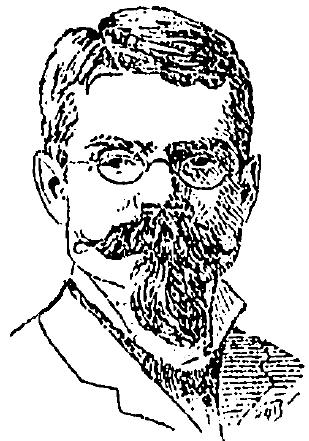
Forrest
Morgan, proofreader for the 1899 uniform edition, helped refine the
works for subsequent editions. |
The most extensive examination and comparison of the texts
was conducted for the Works of Mark Twain series published by the
Iowa Center for Textual Studies in 1980 edited by John C. Gerber, Paul Baender,
and Terry Firkins. The editors concluded that no authorial changes had been
made to the text for the 1899 edition.
W. H. W. Bicknell's Contributions
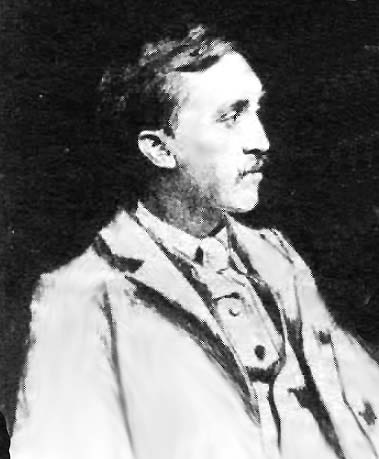
William
Harry Warren Bicknell
photo courtesy of the Winchester, Massachusetts Archival Center |
Frank Bliss hired new illustrators for the 1899 uniform edition.
Artist and etcher William Harry Warren Bicknell (b. 1860 - d. 1947)
was born in Boston, Massachusetts, the son of a grocer. Bicknell graduated
from the Boston Latin School in 1878 and later studied at the Boston
Museum of Fine Arts. He was a pupil of Otto Grundmann and Frederic
Crowningshield. Bicknell etched a number of frontispieces made from
photographs of Clemens that were used throughout the set. Bicknell's
etching of the Tiffany monogram appears as a title page in every volume
of the Autograph Edition,
Edition De Luxe, Japan
Edition, Author's
De Luxe Edition, and the Royal
Edition. All of these editions began issuing in 1899.
Less expensive editions such as Underwood,
Riverdale, and
Hillcrest feature the Tiffany title
page in Volume 1 only. It was eliminated altogether from the Author's
National Edition.
|
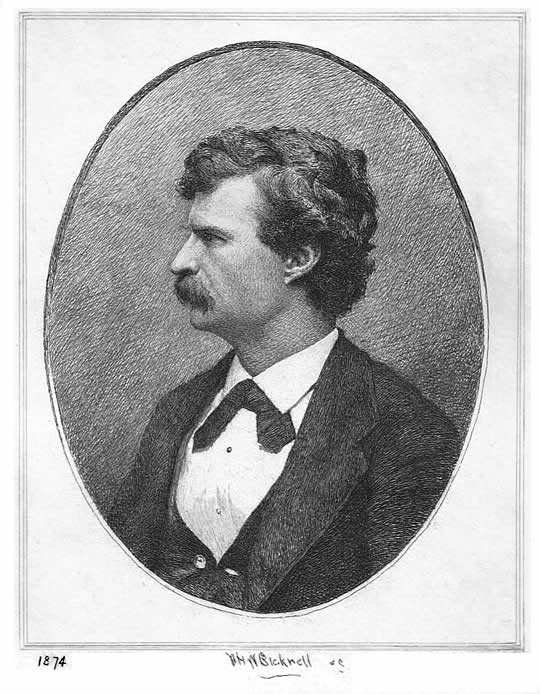
Frontispiece
of Volume 12 etched by William Harry Warren Bicknell based on a photograph
from 1874.
John George Brown, Illustrator
|
Frank Bliss hired John George Brown (b. 1831 - d. 1913) to illustrate
The Adventures of Tom Sawyer for the 1899 uniform edition.
Brown's favorite subjects were the poor classes of street children
of New York including the newspaper boys and bootblacks. He earned
the reputation "Boot-black Raphael" and his style was well-suited
to bringing to life the character of Tom Sawyer through sympathetic
eyes.
Brown was born in Durham, England and attended schools at Newcastle-on-Tyne.
He served an apprenticeship as a glass-cutter and later attended the
School of Design at Newcastle. Brown later studied art at the Royal
Academy in Edinburgh. In 1853 he immigrated to the United States and
obtained work in the William Ownes glass factory in Brooklyn and opened
an art studio in that city. In 1869 he was elected President of the
National Academy of Design where he also taught. Brown achieved artistic
success in spite of a childhood accident which resulted in a severely
injured right hand.
|
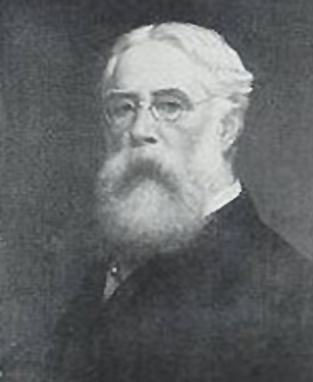
John George
Brown |
Brown contributed four full-page illustrations to the 1899
edition of The Adventures of Tom Sawyer. Brown's "Tom Gave Up
the Brush" was hand-colored and used at the frontispiece for the 1901
Riverdale Edition.
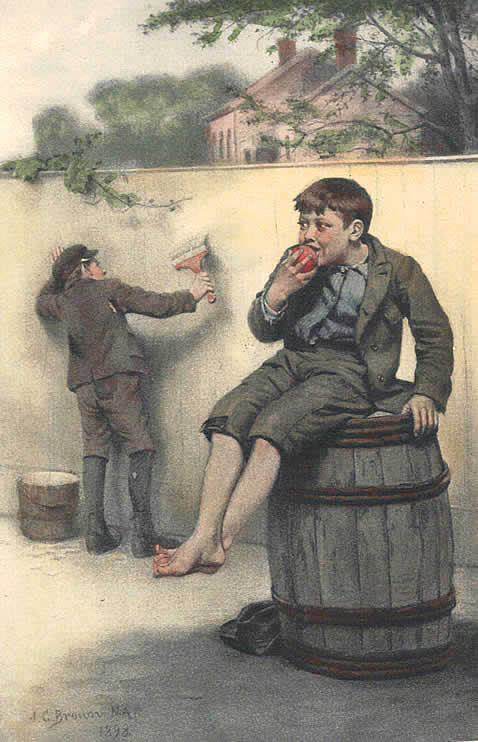
Brown's "Tom
Gave Up the Brush" is dated 1898 indicating that Brown received his
illustration assignment earlier than a number of other artists. The illustration
was hand-colored and used at the frontispiece for the 1901 Riverdale
Edition.
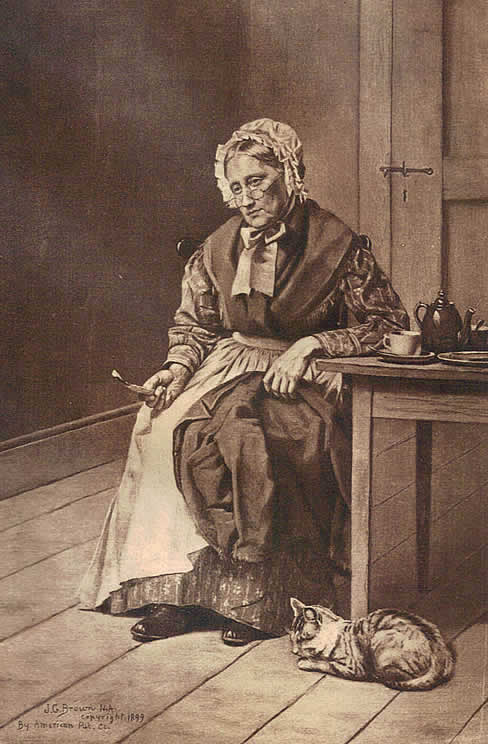
Brown's version of Aunt Polly titled "I Could Forgive Him a Million
Sins"
Brown's illustration of Aunt Polly dated 1899 was dropped
from most subsequent editions of The Adventures of Tom Sawyer after
1899. It reappeared again in Harper's 1923 Mississippi Edition of Mark Twain's
works but has since remained one of the lesser known of Brown's works.
References
"J.
G. Brown, Painter of Street Boys, Dies," The New York Times, 9
February 1913, p. 17.
Mark
Twain Project online database of letters from the Mark Twain Papers/Project
at the University of California at Berkeley.
Rasmussen,
R. Kent. Critical
Companion to Mark Twain, Volumes I and II. (Facts on File, 2007).
Twain,
Mark. The Adventures of Tom Sawyer. Edition De Luxe. (American Publishing
Company, 1899).
_____.
The Adventures of Tom Sawyer; Tom Sawyer Abroad; Tom Sawyer, Detective.
The Works of Mark Twain. John C. Gerber, Paul Baender, and Terry Firkins,
eds. Iowa Center for Textual Studies. (University of California Press, 1980).







